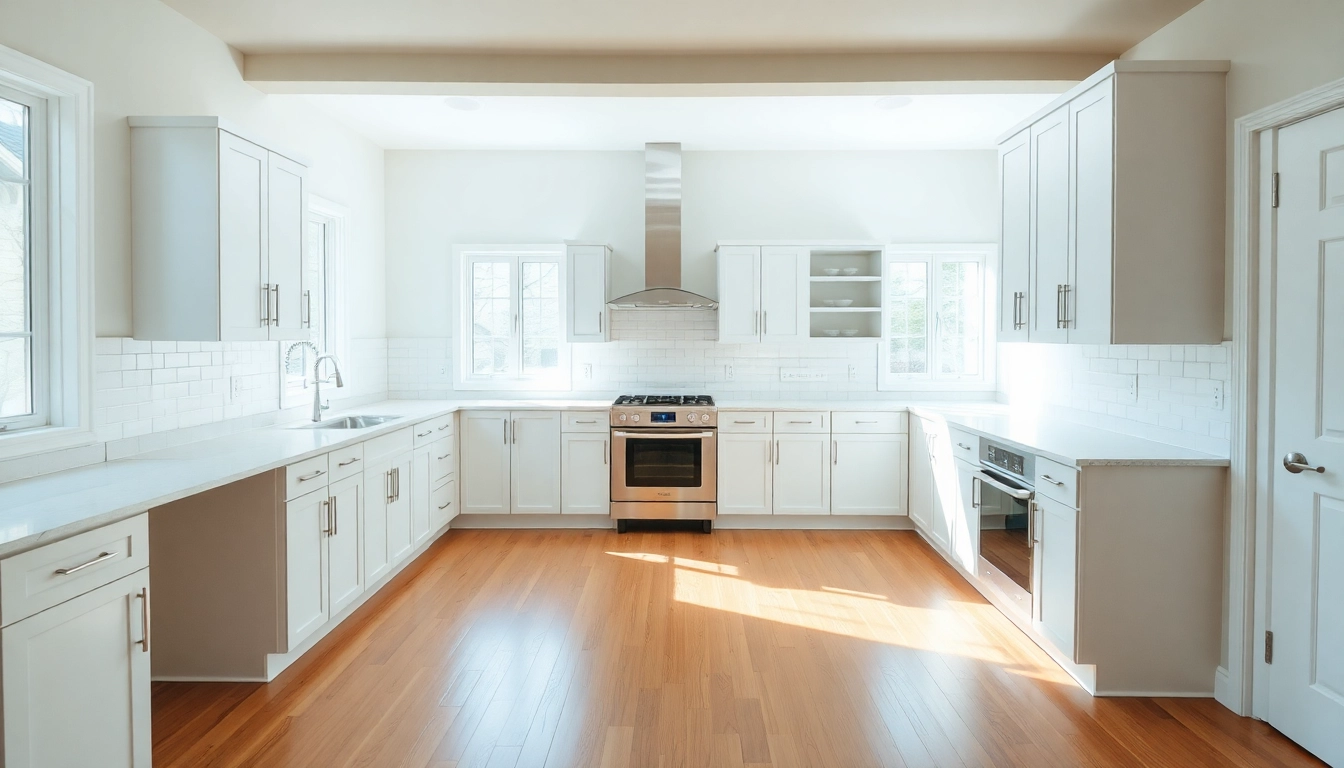
Understanding Remodeling: Definitions and Key Concepts
Remodeling is an essential aspect of maintaining and enhancing the functionality, aesthetics, and value of a home or commercial space. The term remodeling broadly refers to the process of changing or altering the existing structure, style, or form of a property to better suit the current needs or tastes of its occupants. Whether it involves a complete overhaul or minor updates, remodeling projects are driven by the desire to improve living experiences, increase property value, or both.
In today’s competitive real estate market and evolving lifestyle trends, homeowners and property owners recognize that remodeling can be a strategic investment. From modern kitchen upgrades and luxurious bathroom renovations to basement finishing and entire home reconstructions, remodeling adapts spaces to meet contemporary standards and personal preferences. This comprehensive guide aims to demystify the process, highlight best practices, and provide actionable insights for successful remodeling projects.
What Does Remodeling Entail?
At its core, remodeling involves reconfiguring structural elements, updating fixtures, and enhancing design aesthetics. It typically includes activities such as tearing down existing features, expanding or resizing spaces, and integrating new materials and technology. Unlike simple cosmetic renovations, remodeling often requires modifying foundational components like walls, electrical systems, plumbing, and HVAC systems. This process demands meticulous planning, compliance with building codes, and coordination among various skilled tradespeople.
Key aspects include:
- Structural Changes: Altering the footprint of a space, such as removing walls or adding extensions.
- Design and Aesthetics: Choosing new styles, color schemes, and finishes to create a cohesive look.
- Functional Enhancements: Improving layout flow, storage solutions, and accessibility features.
- Technology Integration: Installing smart home systems, energy-efficient appliances, and modern lighting.
Undoubtedly, remodeling offers a unique opportunity to transform a property into a space that reflects current lifestyles and future needs.
Differences Between Remodeling and Renovating
It is crucial to distinguish between remodeling and renovating, as each approach has different implications, costs, and timelines. Renovating generally involves cosmetic updates aimed at restoring or improving a space’s appearance without significant structural change. Painting, replacing fixtures, or installing new flooring are typical renovation activities. Conversely, remodeling entails a more comprehensive overhaul—altering layout, removing or adding walls, and updating critical systems.
For example, renovating a kitchen might include painting cabinets, replacing countertops, and updating appliances. Remodeling, however, could involve gutting the kitchen, redesigning the layout, and installing new plumbing and electrical systems to accommodate modern appliances or accessibility features. Both processes can increase a home’s value and appeal, but remodeling typically requires more planning, investment, and permits.
Understanding these differences helps clients set realistic expectations and select the appropriate scope for their remodeling projects.
Common Types of Home Remodeling Projects
Homeowners often pursue a variety of remodeling projects tailored to their needs and budgets. Some popular categories include:
Kitchen Remodeling
Often considered the heart of the home, kitchen remodels can range from minor updates to complete overhauls. Modern kitchens emphasize open layouts, energy-efficient appliances, smart storage, and high-quality finishes. Updating lighting, backsplashes, and fixtures can dramatically enhance usability and style.
Bathroom Renovation
This involves replacing fixtures, upgrading plumbing, and installing contemporary tiles and vanities. Features like walk-in showers, soaking tubs, and smart toilets can greatly improve comfort and functionality. Bathroom remodeling also boosts property value and appeals to potential buyers.
Basement Finishing
Transforming an unfinished basement into a functional living space, entertainment area, or home gym can significantly expand usable square footage. This often involves insulation, flooring, lighting, and plumbing upgrades.
Home Additions
Adding new rooms, extending existing spaces, or creating outdoor living areas enhance both aesthetic appeal and practicality. Popular additions include sunrooms, garages, and in-law suites.
Exterior Remodeling
Improving curb appeal through new siding, roofing, windows, and landscaping can dramatically increase a home’s attractiveness and resilience against weather elements.
Each of these projects requires careful planning, budgeting, and expert execution to ensure longevity and satisfaction.
Planning Your Remodeling Project
Setting Realistic Budget Expectations
A critical first step in any remodeling endeavor involves establishing a clear and realistic budget. Effective budgeting requires detailed cost estimates, contingency funds (typically 10-20%), and understanding of market rates for materials and labor. According to industry data, the average remodeling cost can vary significantly based on scope, location, and quality of materials, with kitchen and bathroom projects often costing between $20,000 and $50,000 or more.
To prevent budget overruns, prioritize features, seek multiple bids from reputable contractors, and include contingency funds for unforeseen issues such as structural surprises or supply chain delays. Establishing a detailed scope of work early on ensures all stakeholders are aligned.
Designing for Your Lifestyle and Aesthetics
Designing a space that complements your lifestyle requires careful assessment of daily routines, aesthetic preferences, and future needs. For instance, a growing family may prioritize open-concept kitchens and extra bedrooms, whereas empty nesters might focus on luxury master suites and accessible features.
Engage with professional designers or utilize 3D visualizations to explore layout options, material choices, and color schemes. Balancing timeless elegance with functional innovation ensures that the remodeled space remains relevant and comfortable for years to come.
Choosing the Right Remodeling Contractor
Selecting an experienced, licensed, and insured contractor is arguably the most vital decision in the remodeling process. Conduct thorough research—review references, check online reviews, and verify credentials. Field visits to past projects can provide insights into workmanship quality.
Effective communication, transparent bidding, and comprehensive contracts are indicators of a reliable contractor. Local specialists with a strong reputation—like those listed in top Rochester remodeling firms—often deliver better results due to familiarity with regional codes and supply chains. Building a partnership with your contractor fosters collaboration, ensuring your vision is accurately realized.
Best Practices for Successful Remodeling
Permits, Regulations, and Planning Permits
Proper permitting ensures your remodeling complies with local building codes and safety standards. Before commencing work, consult with your contractor or local building department to identify necessary permits, such as electrical, plumbing, or structural permits. Failure to obtain permits can result in fines, project delays, or complications during resale.
Thorough planning also involves drafting detailed drawings, material specifications, and schedules. Engaging a licensed architect or design-build firm can streamline this process and safeguard against costly errors.
Materials and Technology Trends
Staying current with material innovations and technological advancements elevates remodeling outcomes. Eco-friendly and sustainable materials, such as reclaimed wood, low-VOC paints, and energy-efficient insulation, are increasingly preferred. Smart home integrations—including automated lighting, security, and climate control—add convenience and future-proof properties.
Choosing durable, low-maintenance materials enhances longevity and reduces long-term costs, providing greater ROI for your investment.
Managing Timeline and Budget Effectively
Creating a realistic timeline involves detailed scheduling, considering lead times for materials, availability of contractors, and inspection periods. Regular progress meetings and milestone sign-offs promote transparency and keep projects on track.
Effective budget management requires ongoing tracking of expenses, contingency planning, and proactive problem-solving. Utilizing project management software or apps can facilitate real-time oversight and communication between all parties.
Implementation and Oversight
Communication With Contractors and Designers
Clear, consistent communication forms the backbone of successful remodeling. Regular updates, site inspections, and detailed documentation prevent misunderstandings and ensure alignment with project goals. Establishing a primary point of contact simplifies decision-making and swift issue resolution.
Quality Control and Troubleshooting
Ongoing quality assurance involves inspecting workmanship, verifying compliance with specifications, and addressing deficiencies promptly. Developing a troubleshooting protocol helps manage unexpected issues, such as material delays or structural surprises, minimizing disruption and cost escalation.
Ensuring Compliance and Safety
Compliance with safety standards and local building codes protects occupants and workers. Employing safety protocols, providing proper supervisory oversight, and ensuring all permits are in place mitigate risks of accidents and legal liabilities.
Measuring Remodeling Success
Before and After Evaluations
Documenting the transformation through photographs and detailed descriptions provides tangible proof of improvements. Post-project assessments should evaluate whether design goals, quality standards, and functional enhancements have been achieved.
Return on Investment and Value Increase
Remodeling investments should ideally yield increased property value and enhanced homeowner satisfaction. According to industry data, well-executed remodels in high-demand areas can return over 70-80% of project costs upon resale. Key metrics include improved appraisals, increased marketability, and reduced maintenance needs.
Tips for Maintaining Your Remodel
Long-term maintenance ensures your remodeling investments stand the test of time. Regular cleaning, prompt repairs, and periodic inspections of critical systems preserve appearance and functionality. Educate household members about proper care for new fixtures and finishes to prevent premature deterioration.




